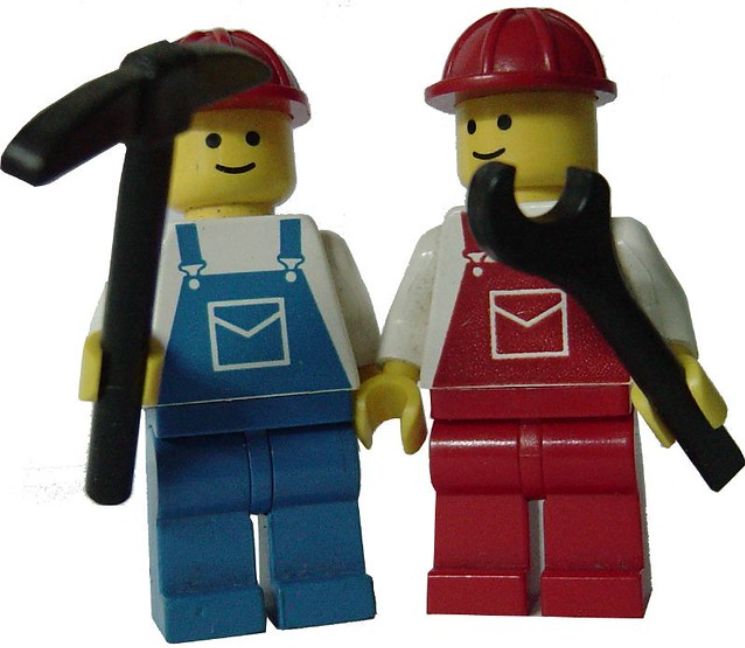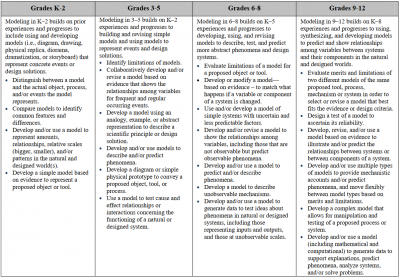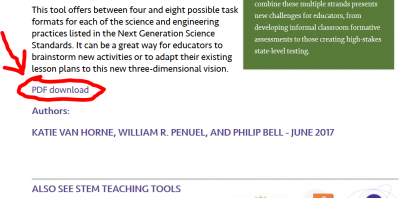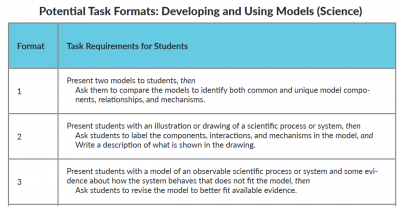This post was originally published at CORELaborate!
I participated in a webinar recently as part of my work with the Olympic STEM Pathways Partnership or OSPP. We focused on the dimension of the Next Generation Science Standards or NGSS known as the Science and Engineering Practices or SEPs. One of the things we discussed is the focus of the Science and Engineering Practices: to have our students DOING Science! Basically, the SEPs are the things that Scientists and Engineers actually do as part of their jobs.
The Practices
Here are the practices right from the NGSS:
SEP K-12 Progression
On the NGSS website, Appendix F, you will find a PDF document with 33 pages of information and details on using the SEPs with students. Something you’ll be able to use from that document is a K through 12 scope and sequence for each of the SEPs! On page 6 of the PDF document for Practice 2 on Developing and Using Models, for example, you will see a scope and sequence for how students develop and use models from K through 12! That way teachers can see how the SEPs build and develop showing what kids should be able to do before they come to your grade level and after they leave your grade level.
This is very helpful in planning on how to incorporate these practices with your students in Science. Students need a balance of reading and learning about Science with DOING Science. Making sense of phenomena requires doing, such as working through labs, to deal with what can often be discrepant events. Hands-on helps us make sense of Science and designing solutions to problems in Engineering requires making things It’s important to note, as with the Disciplinary Core Ideas or DCI’s and the Crosscutting Concepts or CCCs, that the order of the SEPs does NOT constitute importance. There is no SEP that is more important than any other. So when we refer to Practice 2, it is not less important than Practice 1. We are also not expected to address every single practice in every single lesson or even in every single unit either. We wouldn’t want teachers burning out or burning out their students by trying to cover every practice in every lesson or unit! This is especially helpful when you are creating your own NGSS-aligned units or aligning current curriculum to the NGSS yourself.
Really Cool Tool
So as you look to add an SEP to a Science lesson or looking at adding SEPs to a unit, I have a great resource that was shared at the OSPP webinar. If you haven’t visited the STEM Teaching Tools website, check it out! There’s a page in particular, the page on Integrating Science Practices into Assessment Tasks, that has a superb resource.
Scroll down the page and find the PDF download button (see below).
That PDF document was a hit during the OSPP webinar and could be a great help as teachers look for ways to incorporate the SEPs and also to assess how students carry them out! Pretty cool. Here’s how it works:
And here’s an example of some of the tasks for Practice 2 on Developing and Using Models:
Definitely a good document to take a look at if you are or have been incorporating the SEPs into your Science classes! It’s full of ideas for having students do what Scientists and Engineers do. Let me know what you think in the comment section, and if you’ve used it or have ideas for using the SEPs in class, share what you do.






















































